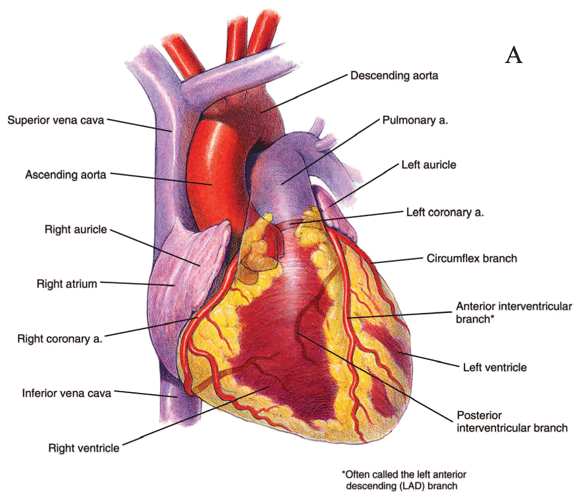Can I obtain VA disability benefits for recurrent arrhythmias?
Yes, VA disability benefits for recurrent arrhythmias may be available.
You will need to prove that (a) you were in the military, (b) your recurrent arrhythmias originated or was aggravated while you were on active duty, (c) you were continuously treated for your recurrent arrhythmias since leaving the service (unless you are filing your disability claim within one year of leaving the service or your condition has been chronic), and (d) you are currently disabled by your recurrent arrhythmias.
About recurrent arrhythmias
Arrhythmias are abnormalities in the rate or rhythm of the heartbeat. In order to efficiently pump blood, the various parts of the heart muscle have to be excited to contract in a smooth, sequential manner. This occurs by a wave of electrical activity that starts at slightly different times in different parts of the heart.
The conduction system of the heart consists of nerves that branch into increasingly smaller branches. The largest cardiac nerve is called the Bundle of His. The His Bundle divides into large nerves known as the left bundle branch and the right bundle branch. Further branching eventually ends in the small nerve fibers spread through the heart muscle (Purkinje fibers). There are two small pieces of nerve tissue known as the sinoatrial node (SA node) and the atrioventricular node (A-V node) that start and control electrical impulses into the His Bundle.
If there is disease of either the conduction system or the heart muscle itself, arrhythmias may result. For example, in ischemic heart disease; when the heart muscle or nerve fibers are deprived of adequate blood flow as a result of coronary artery obstructions, then electrical propagation in the heart is disrupted. Additionally, electrical impulses may start in areas of the heart out of normal sequence so that the heart contracts abnormally and blood is suboptimally ejected into the circulation.

Figure 1: Anterior view of the heart, including main arteries.
Bradycardia and tachycardia
Heart rates below 60 beats/minute (bradycardia) or above 100 beats/minute (tachycardia) are abnormal by definition. Tachycardia or bradycardia do not necessarily cause symptoms; individual differences and numerous medical factors influence when symptoms appear. Both bradycardia and tachycardia may cause symptoms of weakness, dizziness, or chest discomfort; with too fast or too slow a heart rate, insufficient blood is pumped by the heart, there is inadequate blood flow to the brain, and consequently loss of consciousness or even death in some cases.
Generally, with bradycardia heart rates have to fall into the 40 beat/minute range before symptoms appear in ordinary activities; more strenuous activities might cause symptoms to appear at much higher heart rates such as 60 beats/minute (BPM) during those activities. Tachycardia can drive heart rates into the several hundred beats/minute range with resultant symptoms. The more prolonged the episodes of bradycardia or tachycardia, the more likely the patient is to have symptoms.
These rate-related problems can often be controlled with a pacemaker with minimum disruption of the person’s functional capacity, unless there is additional severe underlying disease that imposes exertional limitations.
Ventricular arrhythmias
Ventricular arrhythmias arising from the ventricular walls of the heart are a common cause of sudden death in people with coronary artery disease, accounting for several hundred thousand deaths yearly. Silent ischemia, in which there are no warning symptoms of angina with exertion, can lead to ventricular arrhythmia and sudden death. Individuals with scar tissue from prior heart attacks are susceptible to abnormal electrical activation of the heart and resulting ventricular arrhythmias. Ventricular arrhythmias can also be congenital (relatively rare), or caused by the very drugs used to treat the arrhythmia—sometimes with a fatal result.
Ventricular tachycardia (VT) is present when there are 3 abnormal ventricular heart beats in a row. VT is extremely serious if prolonged into many beats, because the heart cannot pump blood efficiently. In such instances VT may cause dizziness or loss of consciousness due to decreased blood flow to the brain. Ventricular tachycardia may degenerate to ventricular fibrillation.
Ventricular fibrillation (VF) is an arrhythmia found in cardiac arrest. In ventricular fibrillation, the heart’s electrical activity is further decreased, and no blood is being pumped from the heart to the rest of the body. With the onset of ventricular fibrillation as occurs in many cases of sudden death from arrhythmia, there is loss of consciousness within seconds and death rapidly follows without medical intervention.
ICDs
Implantable cardioverter-defibrillators (ICDs) deliver automatic shocks to restore normal heart rhythm by resetting the electrical cycle of the heartbeat. They are used for life-threatening ventricular arrhythmias that have not been controllable with medication, and these devices have saved a significant number of lives that otherwise would have been lost. Therefore, ICDs are an important part of the medical treatment for arrhythmias that resist treatment.
Newer ICDs can be set to monitor for a heart rate that is considered too fast; if that rate is reached, then the ICD starts anti-tachycardia pacing (ATP). ATP allows avoidance of shocks unless absolutely necessary. Also, the newer ICDs can be programmed to deliver increasingly energetic shocks when the patient’s particular type of arrhythmia occurs. ICDs and pacemakers can exist in the same patient and interactions between the devices can be dangerous, but this is changing as ICDs become increasingly sophisticated at also performing pacemaker functions.
ICDs always require the same environmental restrictions as pacemakers in regard to avoiding strong magnetic fields, electromagnetic fields (EMFs), and also additional restrictions in the form of limitations against working at unprotected heights, driving commercial vehicles, use of firearms, flying airplanes, working with heavy or dangerous equipment the use of which could pose a danger to the claimant or others, or any other activity in which a sudden electrical shock could endanger the claimant or other people.
Such shocks are not trivial; they can be painful and may come at any time as a surprise to the patient. Multiple shocks can be particularly incapacitating for 30 minutes or longer, but it also depends on the individual and the severity of the shocks in context of the underlying disease. It is very important to obtain details of shocks from the claimant and how they affect his or her function. Inappropriate exposure of ICDs to EMFs can randomly re-program the device so that it cannot correct bradycardia, or deliver ATP or shocks as needed until the device is re-programmed. Obviously, this could be fatal.
Additionally, the need of an ICD implies a severe and difficult to control ventricular arrhythmia. Such arrhythmias further imply severe underlying ischemic heart disease, usually coronary artery disease.





